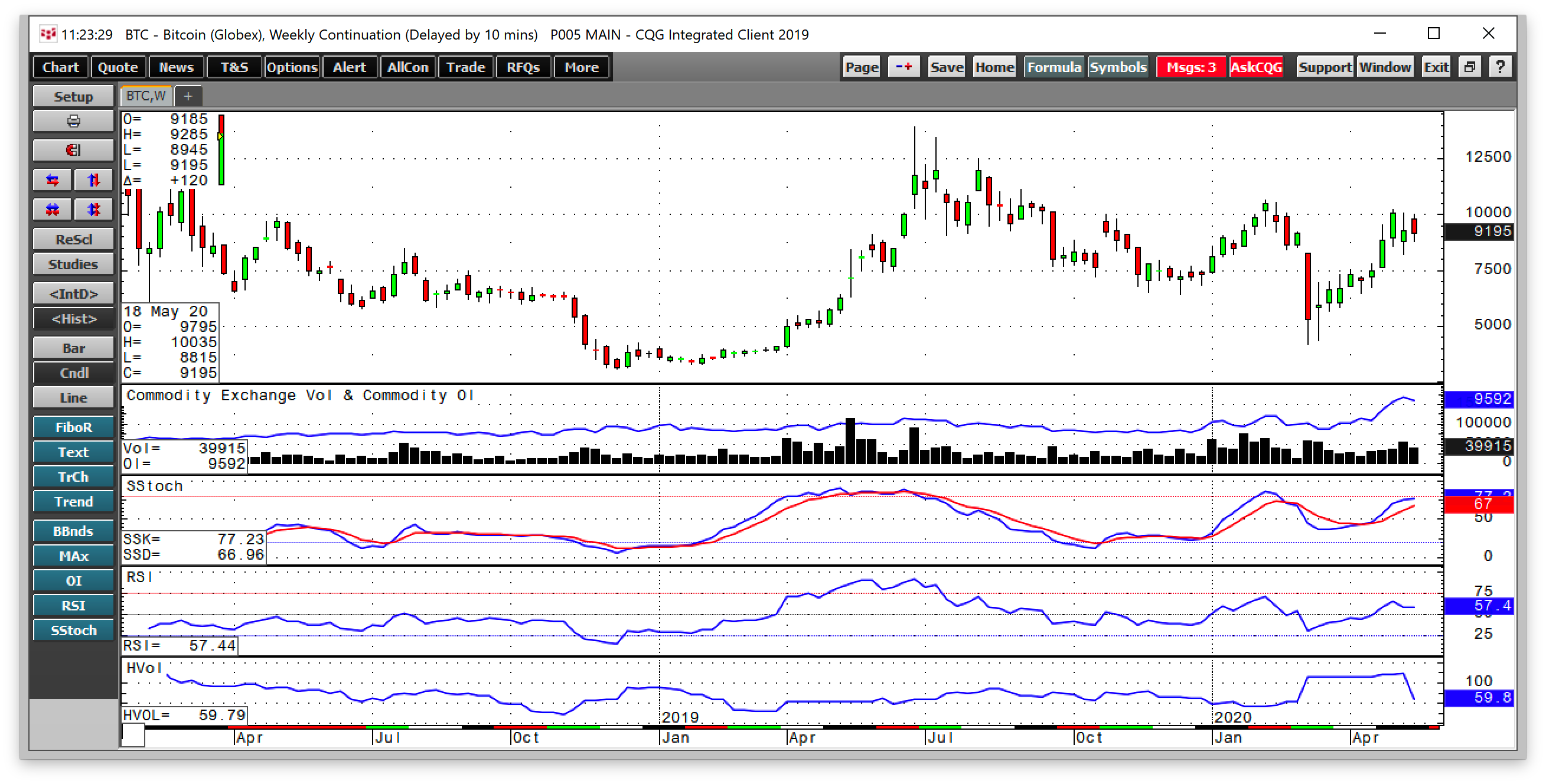3 Reasons Bitcoin Will Ultimately Break Out To The Upside
This article was written exclusively for Investing.com
- A legendary trader gives Bitcoin a thumbs up
- The market cap of the digital currency asset classes has declined since late 2017
- Three reasons to favor the upside in Bitcoin and its crypto cousins
Back in 2010, when almost no one on the earth knew what a cryptocurrency was, the price of Bitcoin was around six cents per token. In the years that followed, I viewed the digital currency as little more than a video game and treasure hunt.
Miners used ever-expanding amounts of computer power and electricity to uncover tokens worth a couple of bucks. In 2012, the price rose above $10 for the first time. In 2013, the $100 level gave way, and people began to take notice. In 2014, many analysts began to call Bitcoin a modern-day tulip bulb craze as the price rose to just below $950 per token when Mt. Gox, an exchange in Japan, went belly up.
While many tokens disappeared into thin air, Bitcoin never moved below the $200 level in the aftermath. New digital currencies have been born, creating a burgeoning asset class that flies beneath the radar of the world’s governments and central banks.
In 2017, Bitcoin experienced a miraculous rally as the price rose to a high of over $17,500 per token. At the highs, the market cap of the asset class reached over $800 billion. Gravity pressured Bitcoin in 2018 and 2019, sending the price to a low of just over $3000 per token. Still, as of the end of last week, it was knocking on the door at the $10,000 level once again.
A legendary trader gives Bitcoin a thumbs up
In March, when markets across all asset classes fell on the back of the global pandemic, the leader of the digital currencies moved to its lowest level since April 2019.

Source: CQG
The weekly chart of Bitcoin futures that trade on the Chicago Mercantile Exchange highlights that the price of the cryptocurrency has moved steadily higher from $4210 per token over the past year. The most recent high at $10,220 came in early May as Paul Tudor Jones told the world he was purchasing Bitcoin as a hedge against inflation. Jones said that Bitcoin “reminds him of the role gold played in the 1970s.”
Bitcoin was trading at just below the $9200 level on May 22. The blessing from the legendary investor and trader led to more interest in the digital currency. As the weekly chart shows, the total number of open long and short positions in the futures contract rose from 3621 contracts in late March to 9,592 contracts at the end of last week. Rising open interest and increasing price is typically a technical validation of a bullish trend in a futures market.
The market cap of the digital currency asset classes has declined since late 2017
At its height in late 2017, the market cap of all digital currencies rose to over $800 billion. Devotees of the burgeoning market expected that it would soar past the $1 trillion level and keep on rising. At that time, there were far fewer than 2000 tokens in the asset class.
As of the end of last week, the market cap was at just under $256.3 billion, with 5,500 different tokens trading. While the total value of digital currencies has more than halved, the number of cryptocurrencies in circulation has more than doubled. Since the peak price for Bitcoin in December 2017 at $19,783, the assets class has suffered significant dilution with thousands of new coins coming to the market. Bitcoin is still the leader of the pack with a market cap of $169.4 billion at the $9200 level. Bitcoin’s value is 66% of the overall asset class.
Three reasons to favor the upside in Bitcoin and its crypto cousins
I am a bull on the prospects for Bitcoin. Meanwhile, I expect wild volatility in the asset class to continue. I would not be surprised to see the price drop back to $4000 or a new high above the $20,000 level by the end of this year. I believe that risk-reward favors the upside for three significant reasons.
- A blessing from Paul Tudor Jones will increase interest in Bitcoin and the other leading tokens.
- Coronavirus supports a trend of germaphobia. Digital currencies in computer wallets eliminate the need for cash.
- At unprecedented levels, central bank stimulus and government programs increase the money supply, which weighs on the values of all fiat currencies and supports alternatives.
The price tag for COVID-19 will be enormous. Bitcoin and the other members of the cryptocurrency asset class are instruments beyond the reach of the world’s central banks. While the risk of government roadblocks will continue to present challenges, success is a function of the expanding addressable market for the digital means of exchange. At almost 10,000 contracts, open interest in the futures market is at an all-time high. The futures are a microcosm of the physical market for Bitcoin and the other currencies. Interest is rising, which is bullish for the price.
Bitcoin has run into initial resistance at the $10,000 level, but the trend is telling us that it is only a matter of time before it bursts through and embarks on another bullish run. The next level to watch on the upside is at the June 2019 peak at $13,915 per token. A break above that level could usher in new record highs above the $20,000 level.